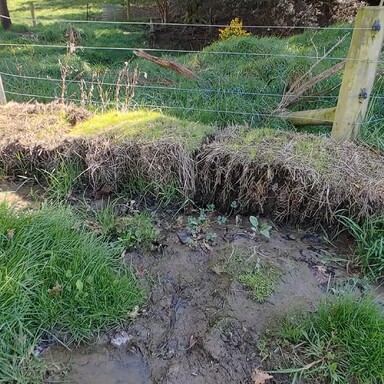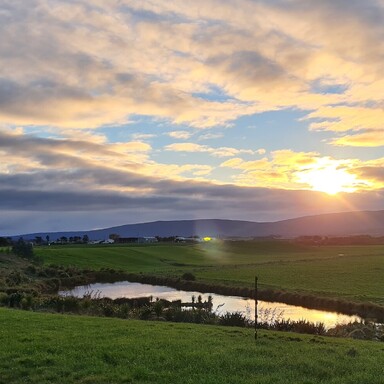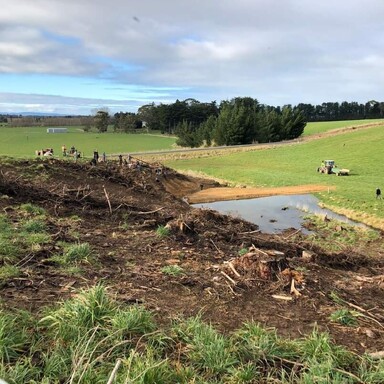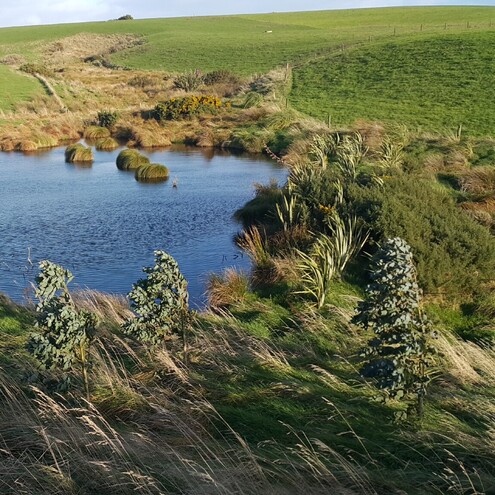APARIMA COMMUNITY ENVIRONMENT (ACE) PROJECT
Workstream 3
Aparima Sediment trap network
ACE is creating a network of sediment traps. Documenting, recording and analysising all aspects.
Creating a reasource that allows landholders and farmers to see what's possible and what's out there. From the most simple to complex of sediment trap designs ACE hopes that this resource will provide a place to start when buiding your own Sediment trap. Cost, mitigations, results. Comparable with your land, farm type and practice.
Starting with six sediment traps across the different catchment groups. They will be constructed with expert guidance within the Aparima FMU investigated to determine the locations that would achieve the best results for placement of these sediment traps.
So what is a sediment trap?
Sediment in drains and streams is largely made up of soil (clay, silt and sand) and gravel. A sediment trap is an area where the runoff from a paddock will collect and settle for sufficient time to allow any sediment in suspension to drop out before the water drains away through an overflow or spill way. Heavy, coarse material will drop quickly, while the finer material that holds most of the nutrients will take longer. Any measure that spreads water out and slows down the flow, will allow sediments to drop out.
There are many different types of sediment traps.
Ponds are generally the most common type and are formed by excavation into the ground or by the construction of an embankment. They are designed so water leaves at a rate that will allow suspended sediment to settle out.
Drains can and do catch sediment. Sections of a drain can be engineered to increase the amount of sediment that they collect.
Swales are relatively flat grassed areas with gently sloping sides and a gentle longitudinal slope. They are generally used to transport runoff following a heavy rain. Water flows at a low velocity so that the grass acts as a filter to remove sediment.
Temporary sediment traps
Thanks to many of our stakeholders, here are some resources you might find helpful when exploring the use of temporary sediment traps.
A guide to sediment trap construction - Environment Southland





